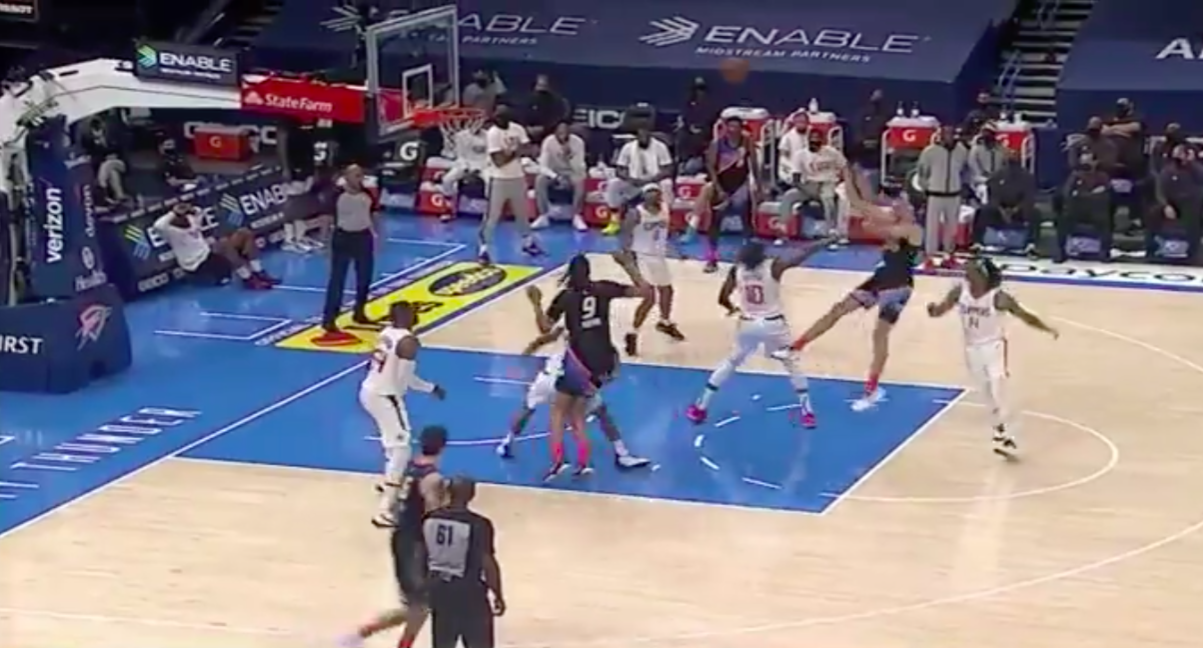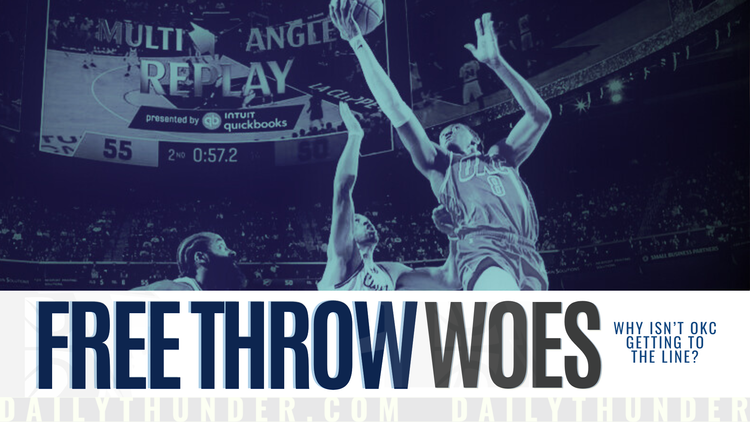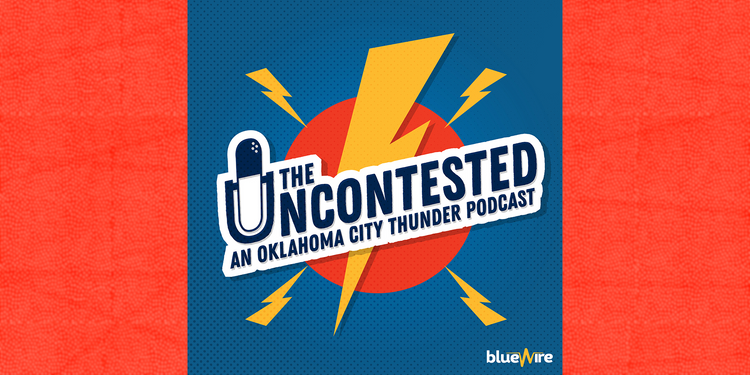Core or Curiosity? Setting goals for Aleksej Pokusevski

Last year’s Thunder team started the season 19-24 behind contributions from solid veterans like Al Horford and George Hill, but a quick glance at the current roster reveals no signs that the team will be competitive this year. There is a clear theme for the Thunder’s upcoming season: development.
One of the players whose development is most important to both the fans and the franchise is Aleksej Pokuševski. The Serbian teen is unmistakable whenever he touches the floor. His lanky frame and gawky gracefulness more resemble an antelope than an athlete. Yet, his rookie season showed flashes of brilliance.
Simply looking at Poku’s stats for the year can be misleading. He really had two stints with the Thunder last year, and they were starkly different. Poku first took the floor in the NBA on his 19th birthday, less than a month after being selected in the Draft. In the intervening weeks, he had to pack his belongings and move 6,000 miles from his home to a place with a different language and culture, all in the middle of a global pandemic. He can be forgiven going 0-6 from the floor his first night in an OKC uniform.
When Pokuševski arrived, he simply was not ready to play in the NBA. He was given significant minutes during the first six weeks of the season, and the results weren’t pretty, averaging just three points per game on 25% from the floor and 18% from three. In 296 minutes, he didn’t even attempt a free throw.
But after spending some time with the OKC Blue, Poku returned to the mothership and played much better, producing 11 points, 5 rebounds, and 3 assists per game. The shooting was still poor, but was noticeably improved.
Sam Presti picked Pokuševski because of his potential. Today’s NBA is all about playmakers with size, and a seven-footer that can create shots for himself, knock down threes, and whip passes all over the court is the gold standard.
Also, NBA defenses crave rim protection, which has historically come from bulky behemoths roaming the paint. But the lead-footed giants that once dominated in the 90s and 2000s cannot survive defending in space in today’s high pick and roll heavy league, so tall wings that can contest shots are increasingly being relied on to provide defensive value at the rim.
If Poku can do both of these things, he’ll be a major part of the Thunder’s future contention. But he has a long way to go before that potential is realized. The shooting is a real problem if it doesn’t improve. Even his post-Blue shooting splits of 37/32/74 are well below basketball’s Mendoza Line.
His ball handling also needs to improve. Poku had more turnovers than assists in both stints last season, and the ratio stayed constant at just below 1:1. For comparison, Steven Adams had a 1.5:1 ratio in his last season with the Thunder.
So, given the amount Pokuševski needs to grow, how can we judge whether his sophomore season is a success? Given that he’ll be a significant part of the rotation, it seems fair to use players who play similar roles for similar teams as benchmark.
I looked at all the players who played between 20-30 minutes per game at either small forward or power forward for teams that finished in the bottom five of their respective conferences (excluding the Thunder) last year. The average player in this category put up 10.4 points, 5 rebounds, and 2.3 assists per game, which is in line with Poku’s production during the post-Blue period last year.
The big difference, though, is efficiency. The average player in this category had shooting splits of 44/33/75 and had 1.65 assists for every turnover. These are achievable goals for Pokuševski. If he meets these benchmarks in Year Two, he has a good shot to be a real contributor for OKC.
In the Thunder’s search for talent, every roster spot is hotly contested. The franchise wants to take chances on as many players as possible to find the guys that will help. Any player Presti invests multiple seasons in represents a significant opportunity cost. This year, Poku has a chance to prove he’s worth it.



